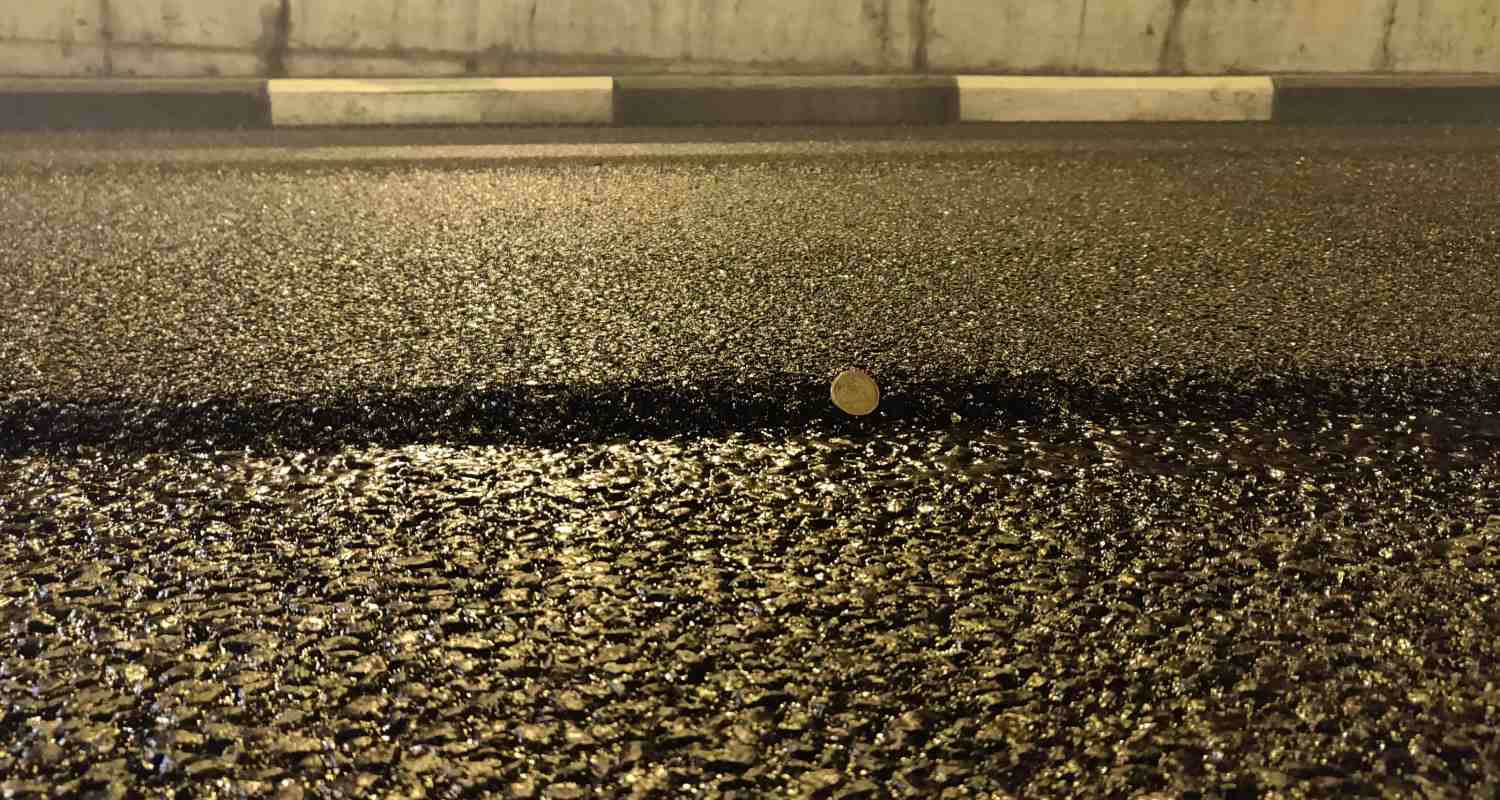
Safety and infrastructure innovations
Safety and infrastructure innovations
Roads with infinite lives
Reading time: 13 min
Self-repairing road surfaces or a compound that “rejuvenates” asphalt. These are some of the latest innovations to enhance safety and lengthen the useful life of one of the most essential pieces of infrastructure.
Roads are the backbone of Spain. They are responsible for nearly 90% of the passenger travel and ensure the mail, food, ambulances, and school buses can get to any point in the country. This familiar infrastructure suffers from the same misconception as many other items in our daily lives: we take its proper functioning for granted. However, guaranteeing its safety and durability, and therefore, safe and fluid transport is a complex task involving major investment and a great deal of research and technology.
Because roads, like human bodies, get old and lose capacities over time. That’s why the public and private sectors are researching techniques to lengthen this network's life. For example: there are now road surfaces that repair themselves and eternal youth emulsions preventing their deterioration. They are solutions that coexist with the infinite reuse of materials roads are made of. Almost everyone who has driven in Spain has probably unknowingly driven on a road that had a previous life.
The nearly eternal life of bitumen and rock
The nearly eternal life of bitumen and rock
Roads’ skin, the top layer, is the first to show symptoms of stress. Made with a bitumen mix – rock and bitumen, a petroleum derivative acting as a binder – is subject to the friction of traffic and the most aggressive weather conditions like sun and rain. This layer needs to be in perfect condition to ensure safe travel for everyone on the road.
José Luis Peña, head of the Technical Area of the Spanish Association of Manufacturers of Asphalt Mixtures (Asefma), underscored that both ingredients are the perfect example of the circular economy: “We don’t know it, but we travel on reused roads all the time. We've been converting gravel [rocks] and bitumen into new raw materials for decades. Roads made with reused materials are indistinguishable from new ones.”
A common scene. When you’re driving, you come across a machine drilling and pulverizing the top layer: this is the start of the road’s resurrection. The material exacted is taken to a plant where it is treated and processed. Once it’s ready, it will be used to create or bolster another section of the road and ensure the road is in optimum condition for traffic. Asefma estimates that 1.9 million tons of materials from asphalted roads was reused in 2020 and expects this number to rise in the coming years.
This technique of reusing materials, called hot-in-place recycling, is mainly used on roads with low and medium traffic flow. Other roads with heavier traffic, such as the A-1 or M-40 in Madrid still have a high percentage of roads with new resources – once again rock and bitumen – but that is changing. According to Peña, “The new waste act requires more manufacturing circularity.” Experts agree that the quality of the replacement materials is so high that no one notices a difference while driving. Approximately 20% of road material is currently reused.
The compound that “rejuvenates” asphalt
The compound that “rejuvenates” asphalt
This reuse is implemented alongside another sophisticated, new technique, cold-in-place recycling. The University of Delft (Netherlands) was one of the first to explore this method aimed at prolonging the life of roads without having to change them while also reducing maintenance costs. A team of researches from this university has developed a pavement with milimetric capsules filled with a healing agent. When the pavement cracks, the compound is released and spreads, sealing any potential fissures in the material. That is how it heals.
In Spain, Repsol and Acciona have developed a similar mechanism that is now in use on the country’s roads. The pavement itself exudes the compound from the very beginning and continuously combats deterioration, extending intervals between repairs and reducing the financial cost of conserving the road.
Francisco José Lucas Ochoa, head of Asphalts at Repsol and chairman of Eurobitume (European Association of Bitumen Producers), compares these compounds to the elixir of life, “Asphalt is like a living creature. It is born, it grows, and it dies. But it doesn't totally die. We can resurrect it. This technology allows us to rejuvenate the road. It restores certain characteristics that have been lost with the passage of time.
New materials and safety
New materials and safety
José Luis Peña, from Asefma, discussed an “ethical commitment” to increasing the longevity of the road and foregoing planned obsolescence, something that is now occurring with appliances and cell phones.
But durability isn't the only sticking point. Companies are already ecodesigning to reduce their impact. For instance, work is being done to reduce the noise caused by the friction between the tire and the road, which is especially important in suburban areas. These sound-reducing pavements can lower noise levels between 3 and 5 decibels, i.e., by half.
Deborah García Bello, chemist and disseminator of scientific research, explained that there are more and more refinements made to building materials, such as systems to purify the atmosphere: “There are asphalts with photocatalysts that are able to destroy nitrogen oxides when they are hit with sunlight.”

Toward maximum material value
From most to least expensive and resource heavy, here are the alternatives for extending the useful life of a road.
From most to least expensive and resource heavy, here are the alternatives for extending the useful life of a road.
- Prevention. Techniques to extend the life of roads without having to use new materials or generate waste.
- Minimization. Reducing extraction and expenses for new resources used to create or resurface roads.
- Reuse. Removing and processing worn material from roads so that it can be used again for the same purpose it was initially designed for.
- Recycling. Recycling worn out material and converting it into other products different from the source product, such as filler or paths.
Roads that “sing” and interact
Roads that “sing” and interact
Beyond the research into new materials, roads are experiencing a connectivity revolution. A report published by the University of Zaragoza lays out several experiences that may border on science fiction, but are already being seen on roads around the world. The most remarkable projects can be found in road sections already operational in Taiwan and the US. The roads have special grooves that make music based on the speed of the passing vehicles: if the song doesn't sound right, that’s an indication to the driver that they may be speeding. This advancement coexists with new customizable wireless signals that go off on the dashboard or the driver's phone; or roads able to generate electricity with the traffic and charge the car’s battery. According to the National Association of Vehicle Sellers, these technological trends will expand in Spain in the next few years, with more than 9 million cars connected between now and 2025.
Published in El País


